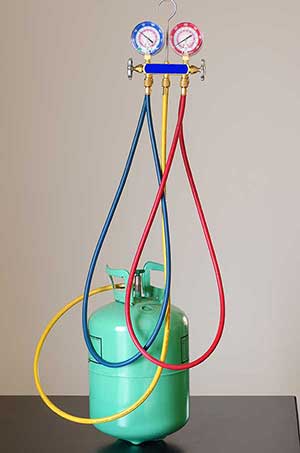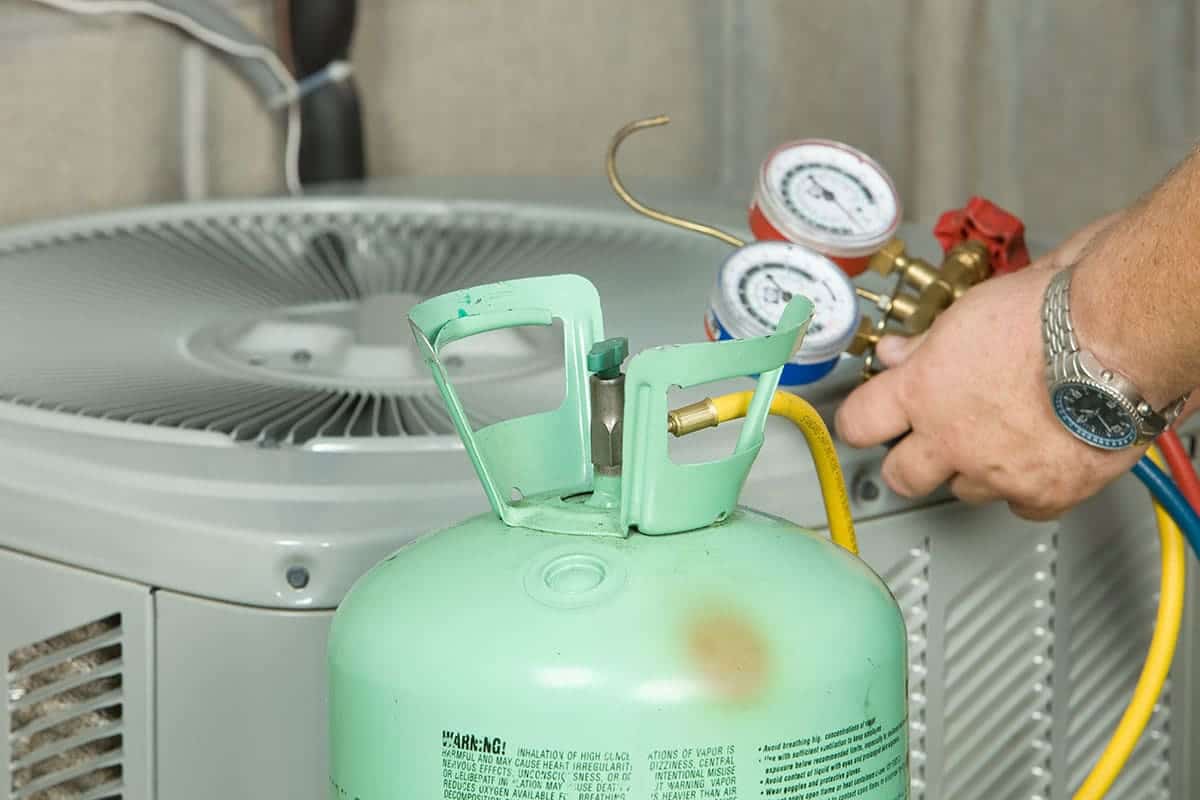What is the difference in R22 and 410A in air conditioning units?
What is the difference in R22 and 410A in air conditioning units? Why did this change?

Both of these air conditioning rerefrigerants, R22 and 410A, are in common use throughout the world. R22 refrigerant is also known as Freon. In 2004, the Environmental Protection Agency began phasing out R22 air conditioning refrigerant. R22 will become completely obsolete in the year 2030. R410A, commonly known as Puron, will be the replacement for Freon.
The primary differences between the R22 and R410A air conditioning refrigerants are:
- R-22 is a single chemical compound, “Chlorodifluoromethane”, a leak can be “topped off” without negative effect, the leak should be repaired but a “top off” is allowed on residential equipment. The refrigerant can be charged in either liquid or vapor modes.
- R410a is a BLEND of three chemicals, each with a differing pressure and more importantly a different size molecule. If a leak occurs, the three components leak at a different rate therefore charging must be accomplished in the liquid mode and NO top off is allowed. Leaks require the removal and recycling of the entire refrigerant charge, installation of new drier(s) and recharging via liquid only.
- Price – due to an international agreement, the Montreal Protocol, the quantity of R-22 available in signatory countries (US is a signatory) the quantity of R-22 is restricted each year due to the chemical makeup of this refrigerant. R-22 contains a small amount of the element Chlorine which is suspect to damage the upper level Ozone layer in the stratosphere. As the quantity being produced is diminished each year our Federal EPA issues “Rights Letters” or the right to import or manufacture this refrigerant. Demand has outstripped supply and the price of R-22 has reached unprecedented high levels, a price increase of some 400% in the last two years. R410a has remained stable in price, however, the EPA is now voicing concern that it “may” have “Global Warming Potential” and is calling for an early phase-out of this refrigerant, perhaps beginning in 2016. The EPA is to conduct hearings with interested parties before making a final determination on the fate of R-410a.
- Substitutes – There are several “replacement” refrigerants making their way to the market. NU-22 or “New 22” is one such product. This is a blend of several chemicals and must be handled in a similar fashion to R-410a with regard to leaks and charging procedure. However, there are some uninformed servicers that are attempting to ADD NU-22 to an existing R-22 system without removing ALL the R-22 present in the system. This truly will not work, wild temperature and pressures will result. CAUTION, if you opt for NU-22 replacement for R-22 in a system there will be a penalty in capacity and efficiency and a clearly marked placard MUST be affixed so the correct charging chart is used to determine capacity and pressures.
- Oil – Why not just remove the R-22 and install R-410a? They use two TOTALLY different oils to lubricate the internal parts of the compressor and TXV (thermal expansion valve). R-22 uses simple mineral oil, non-toxic, safe, stable, etc. while R-410a uses a somewhat exotic Poly o Ester (POE) oil typically found in jet turbine engines. The refrigerant used MUST match the oil present in the system, which is one reason why you can’t replace the R-22 with R410a in a system. Additionally, the POE oil used with R-410a is “ultra-hydroscopic” and extreme care must be exercised to eliminate any moisture and water vapor from the system. The mineral oil used with an R-22 system is only mildly hydroscopic and the level of care with regard to the moisture contamination is vastly different. The correct tools, a seperate micron gauge and a tested vacuum pump capable of reaching pressures of 500-microns is a must for work with R-410 due to moisture concerns.
- Other Substitutes– May other refrigerants have been tested, one candidate for use is Propane; however it is extremely flammable therefore it has been ruled out for commercial use. There are many properties necessary for a successful refrigerant, while R-22 is being phased-out in the US, Canada and Western Europe it is still the most prevalent refrigerant in use in the world and costs very little on the world market. The Federal government strictly controls the importation of R-22 and has imprisoned violators of the “Clean Air Act” the statue which governs refrigerant use. BEWARE of R-22 that is offered at too low a price, either it is US refrigerant that may be contaminated with “blended refrigerants”, moisture or “bootlegged” from the world market with an unknown chemical makeup… it may not be “real” R-22, the results of either being catastrophic for the A/C system.


